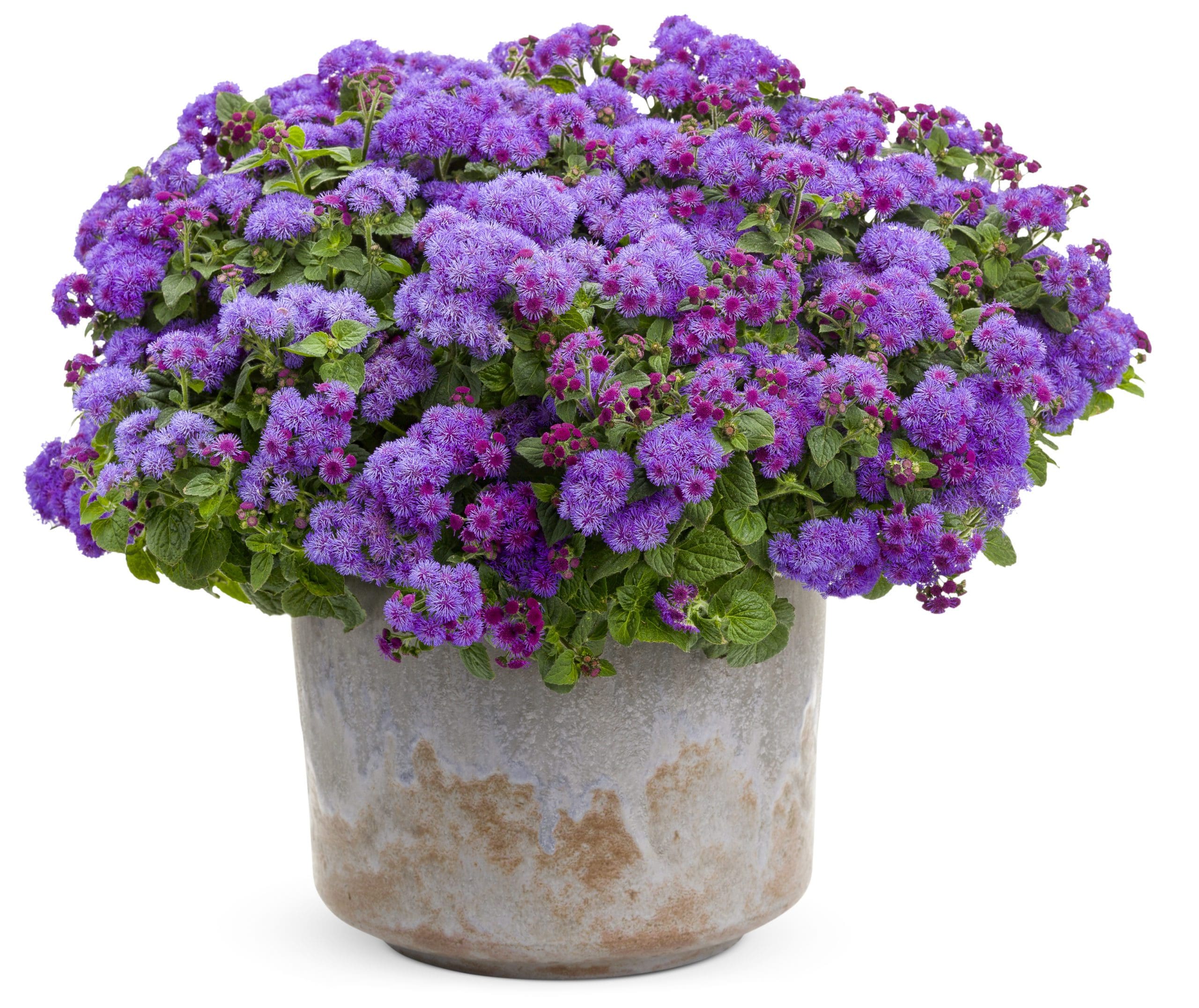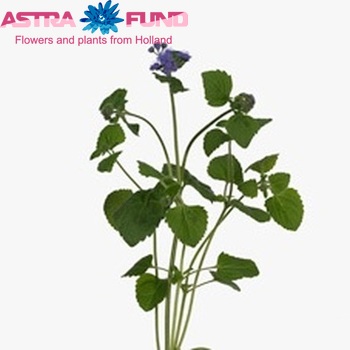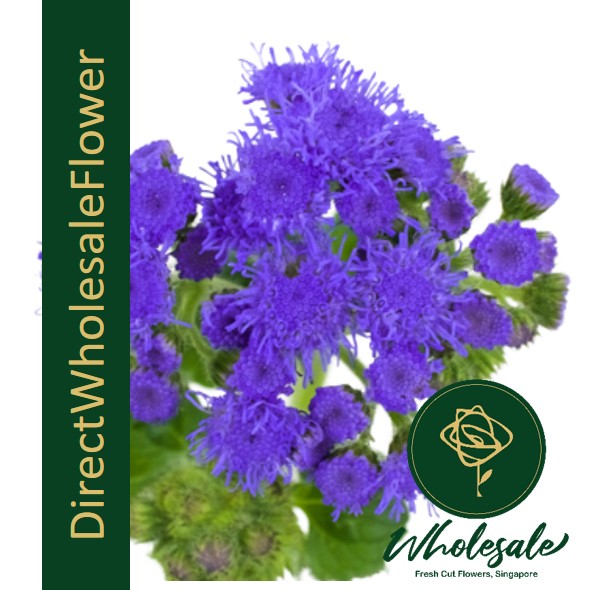
May be air-dried, but the flower color often fades. Dried: Harvest when flowers are completely open hang. HARVEST:Fresh: Harvest when flower spikes 3/4 open.

SOIL REQUIREMENTS:Fertile soil with good drainage, and a pH of 5.0-6.0. Ageratum will tolerate part shade where summers are hot.

Harden off and transplant after the danger of frost has passed. Transplant to cell packs or larger containers when the first true leaves appear. Bottom water or mist to avoid covering seed with displaced soil. Do not cover seed as light aids germination. SOWING:Transplant (recommended): Sow 6-8 weeks before the last frost. Ageratum is also known as flossflower or blue mink. Use as a classic filler for mixed bouquets or plant to attract bees and butterflies to your garden. Note: Don’t confuse annual ageratum with perennial ageratum ( Eupatorium coelestinum).Tight blue flower clusters. Plant them so all types get good air circulation. These plants wilt if they are not watered often enough. Plant seeds or small plants in rich, well-draining soil and water regularly. These showy blooms are a wonderful addition to many types of gardens and locations. Many other blooms attract bees, butterflies, and other pollinators, so do your research if you wish to plant these in your landscape with ageratums. This allows more effective companion plantings, such as a part of a pollinator garden.Īgastache ‘Black Adder’ can be included in this planting, along with Yarrow, bee balm, Basil, dill and marigolds. However, deadheading the flowers can encourage new blooms to appear more quickly, so the choice is yours.Īgeratum can take part shade in the garden and prefers it during summer heat. The old-fashioned ageratum blooms quickly and profusely and is one of those plants known to “bury their dead,” meaning flowers develop so quickly there is no need to remove them as they die off. Thyme and the relatively new Osteospermum make great companions too. Add summer blooming dahlias to this mix for textured borders with a variety of colors popping through. Companion Ideas for Different Ageratum Plantsįeathertop Pennisetum villocum, a grass with feathery blooms atop arching stems combines well with Blue Ageratum types. Blue types are favorites, as true-blue flowers are sometimes difficult to find for planting in the garden. Soften a border with these colorful, long-lasting types of ageratum. A few inches taller, compact varieties are 6 to 9 inches (15 to 23 cm.), like “Swing Pink,” “Summer Snow” and “Pink Improved.”

Shorter types of this annual flower find a useful place in container gardens, and all heights should grow in your summer cutting garden.ĭwarf varieties of ageratum are tiny types like “Blue Surf” and “Royal Delft”. Taller ones are of the Ageratum Houstonianum type. These taller floss flowers like “Blue Horizon” and “Red Top” bloom in the colors red and blue, and can add a patriotic display for 4th of July when combined with the shorter white flowering types of the plant.

The fluffy powder-puff flowerheads grow in shades of pink, purple, blue, and white and may reach 24 to 30 inches (60 to 76 cm.) in height. With blooms that begin in late spring and last until autumn, you’ll find types of ageratum varieties that are perfect for your beds and borders.


 0 kommentar(er)
0 kommentar(er)
